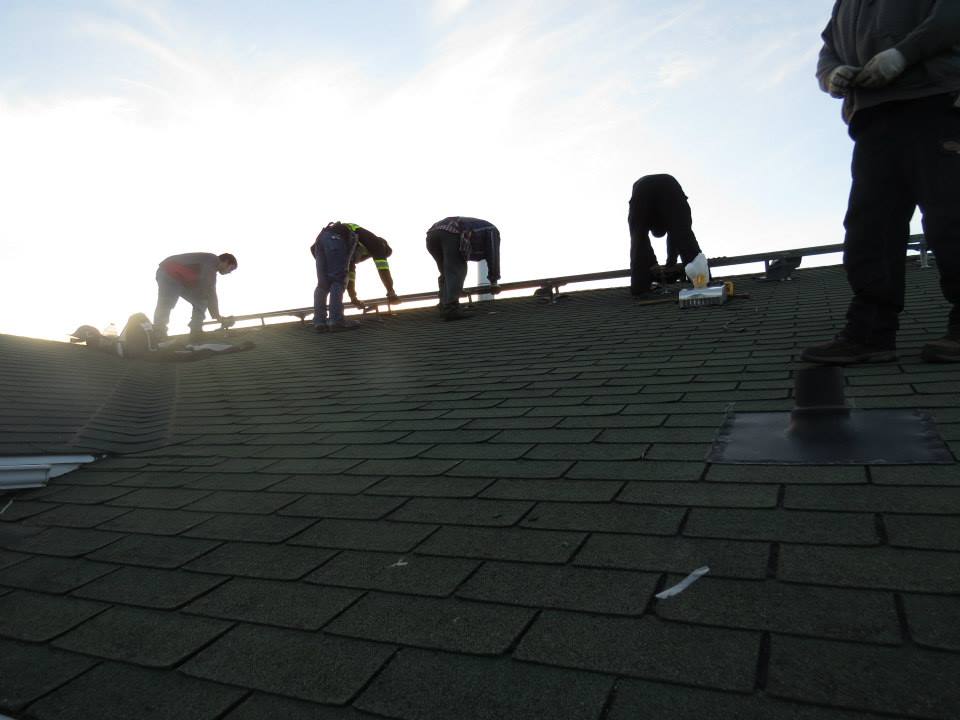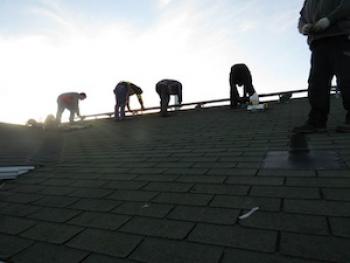Image Caption
By Shari Narine
Sweetgrass Contributing Editor
KIKINO METIS SETTLEMENT
June 13, 2016.
Two of the six members appointed by the provincial government last week to the newly-established Energy Efficiency Advisory Panel are First Nations representatives.
“That’s definitely a good thing. That should be happening a lot more,” said Jesse Cardinal, coordinator with Keepers of the Athabasca.
What’s even better, she points out, is that it isn’t just “token Indians chosen to appease people.”
Louis Bull First Nation Councillor Desmond Bull and Roni-Sue Moran, director of Industry Relations Corporation and a director on the governance board for Christina River Enterprises, a company fully-owned by the Fort McMurray First Nation, are the new appointees.
Bull has actively promoted solar energy with his First Nation, with the installation of 340 solar panels on four public buildings. Fort McMurray First Nation is presently partnering with Keepers of the Athabasca to get their own solar project underway.
Cardinal says her organization is in the process of hosting community meetings in both Fort McMurray First Nation and in Beaver Lake Cree Nation to determine where members want to install solar panels. Keepers of the Athabasca, made up of Indigenous members and environmental groups, focuses on the protection of water, air and land in the Athabasca River watershed.
Indigenous inclusion on such panels and committees is necessary, says Cardinal, and she points to the collapse of both the federal-provincial Joint Oil Sand Monitoring program and major changes to the Alberta Environmental Monitoring, Evaluation and Reporting.
“A huge part of the reason why JOSM … and AEMARA failed was the lack of Indigenous inclusion all around,” said Cardinal. “There were a lot of good ideas coming forward from First Nations and Metis people ... (but) every angle that the First Nations and Metis were trying to be included (in) wasn’t being acknowledged at all.”
Cardinal praises Premier Rachel Notley for moving government business away from the patriarchal system of deciding what’s best for Indigenous peoples.
“Notley really seems to be understanding that … you can have all this power and all this money and all this authority, but until you sit down with First Nations and Metis as equals, we’re not going to move ahead in this province,” said Cardinal.
The Energy Efficiency Advisory Panel, chaired by Dr. David Wheeler, will be meeting with Albertans, Indigenous organizations, and stakeholders to determine the types of energy savings programs that Energy Efficiency Alberta can deliver in the short and medium-term. The panel will makes its recommendations to the government this fall. The goal is to have new programs and services in place early in 2017.
Green energy is something already embraced by many Indigenous communities. In 2015, Montana First Nation undertook two solar projects, including erecting a solar roof on its water treatment plant. Saddlelake Cree Nation is also creating a solar project to power their water treatment plant. The Lubicon Cree Nation built installed solar panels for its health centre in Little Buffalo.
In 2014, Keepers of the Athabasca worked with Athabasca Chipewyan First Nation to erect solar panels on the youth and Elder lodge.
“Solar (energy) is a big focus right now,” said Cardinal, but she notes that “creating new circles,” such as solar energy, is not what renewable resources is all about.
“What I’m going to work on in the next year is food sovereignty again. And that to me is a form of renewal. It’s (about) returning back to the original circles of growing your own food,” she said.


